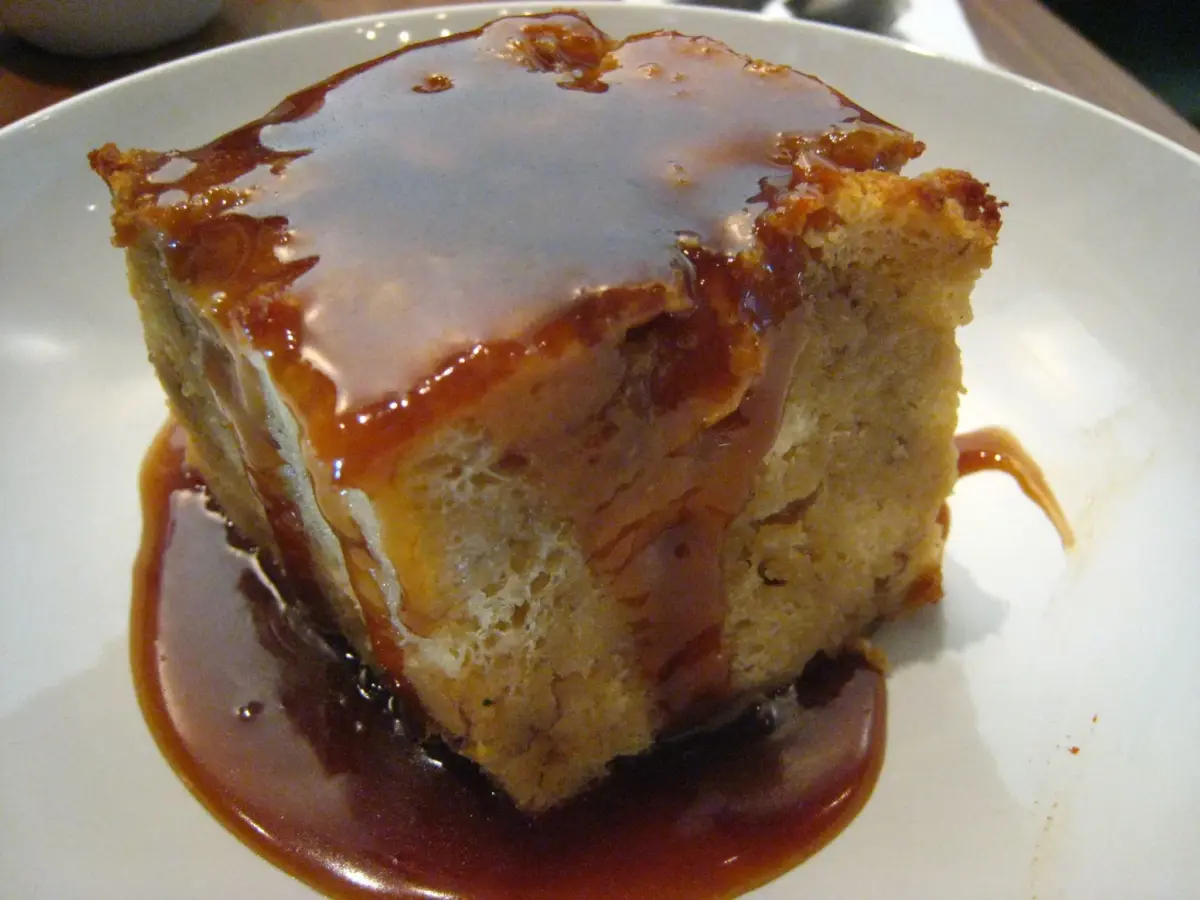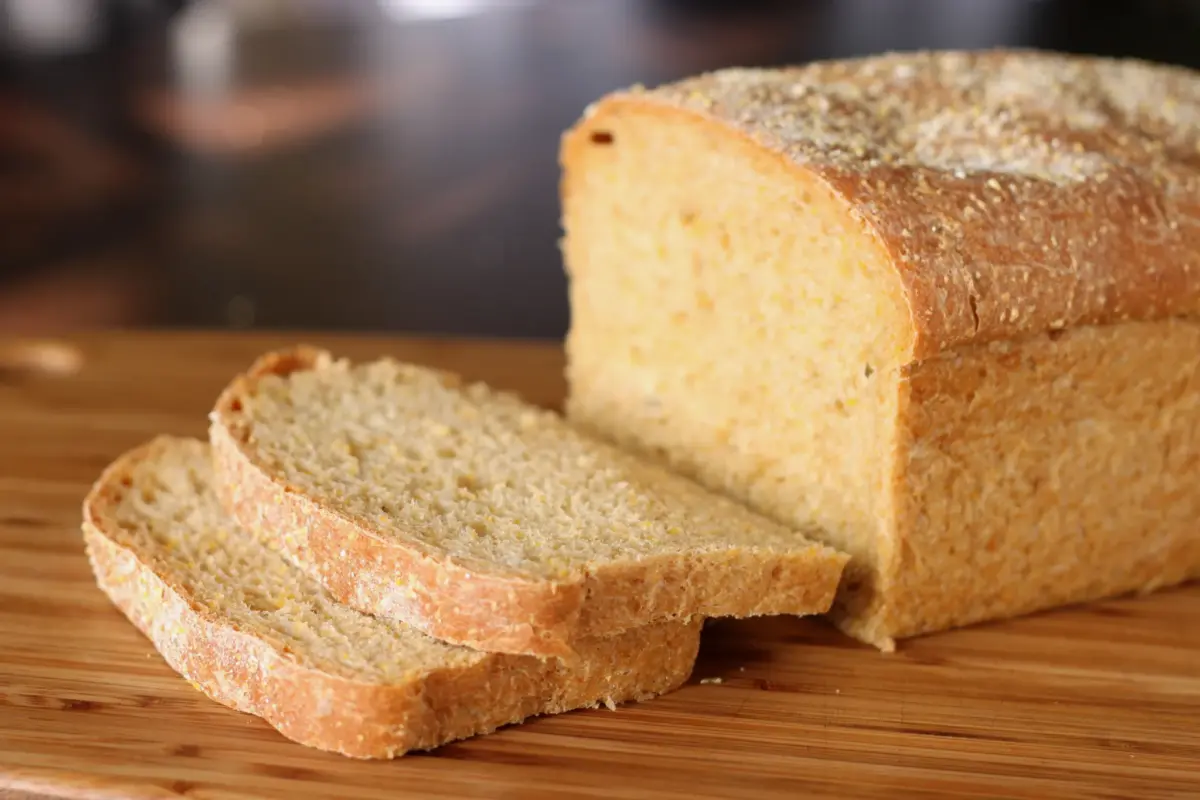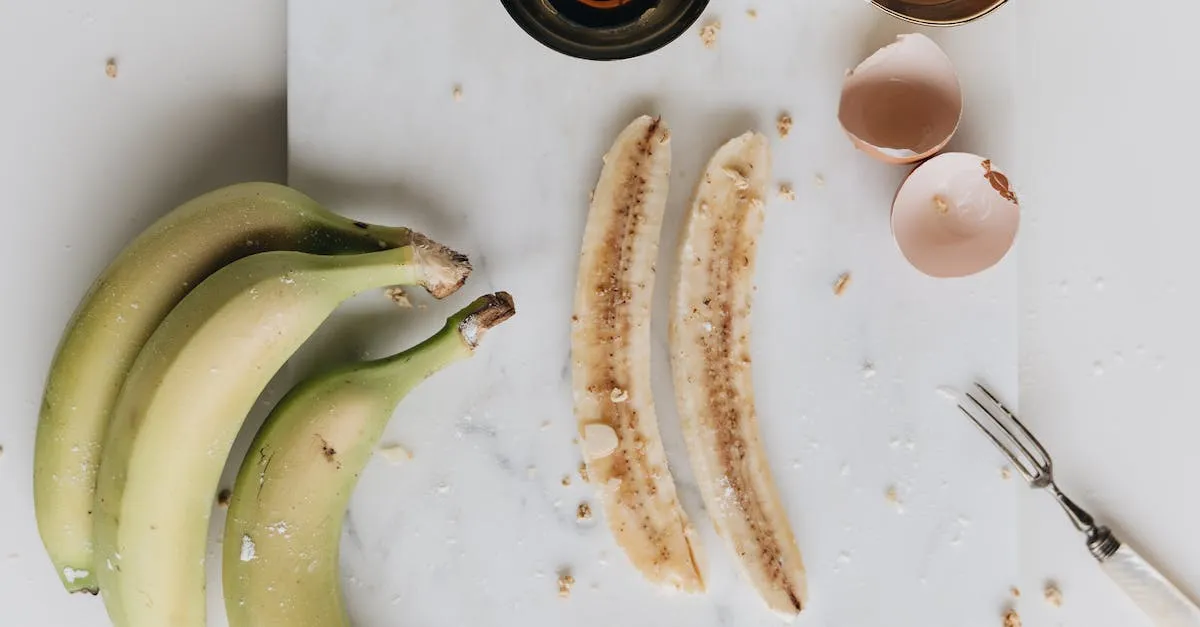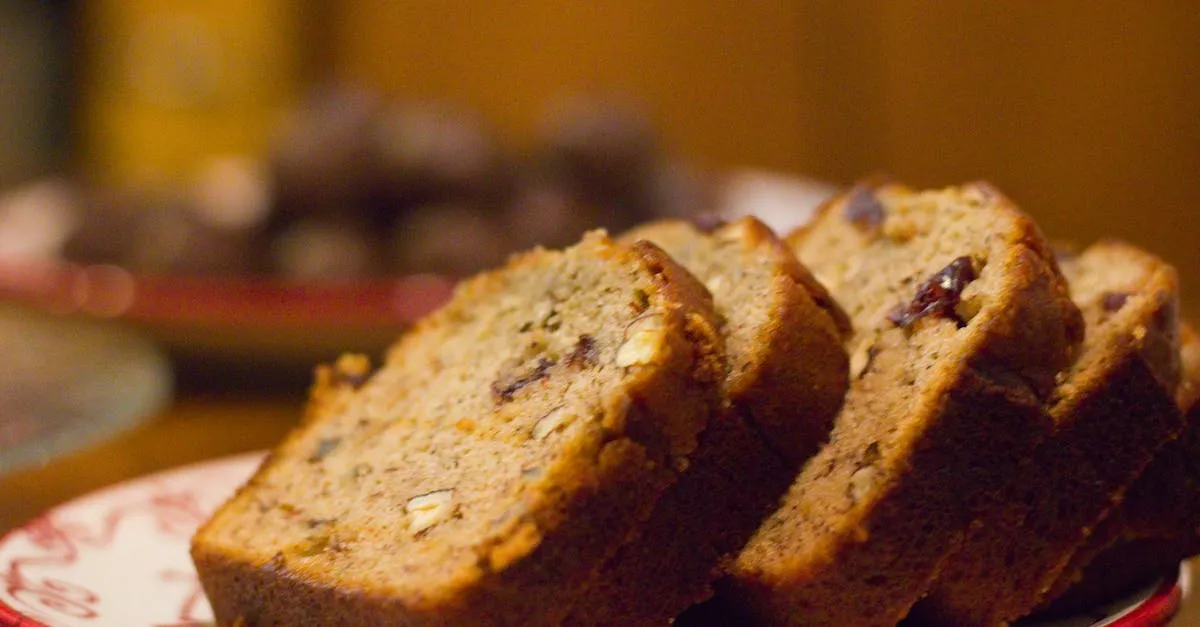Babies love bananas, and parents trust that bananas are a fairly healthy food so giving a banana to a baby is a win all round. But what exactly makes bananas so good?
1. Bananas as a Starter Food
As soon as your baby is ready to begin eating solids, at around 4 – 5 months old, bananas can be introduced as their first foods. There are three main things that make bananas good for baby:
Consistency: bananas are naturally soft, so can be mashed and are easily swallowed with no risk of baby choking.

Flavor: a ripe banana is naturally sweet, making them highly palatable for the ven the fussiest eaters.
Nutrients: bananas contain naturally occurring potassium, among other helpful vitamins, which is highly beneficial for all children.
It used to be the case that all babies moving from a diet of milk alone would begin by eating rice and move on to fruits after a couple of months. There is still nothing wrong with this approach, but more and more parents are opting to introduce fruit and vegetables much earlier than before.
Most doctors recommend waiting until a baby is at least 6 months old before beginning to wean onto solids. and bananas are a perfect first food to introduce. Some parents choose to introduce solids a little earlier if their baby is showing signs that they are ready to move on and no longer seems satisfied with their diet of milk alone.
2. How do I Feed Bananas to My Baby?
First foods need to be mashed to a very soft consistency and bananas are very watery which makes them ideal for this. In the early days, you will need to puree or mash the banana with a fork until it resembles runny baby food.
Riper fruits are ideal to achieve the right consistency. This can be fed on a clean spoon, a little at a time. Your baby might be amazed at the taste at first, as a change from milk will be quite surprising. Some may respond very positively, wanting more and more, while others may be a little uncertain how to react to this change.
All babies are different, and if they don’t seem to enjoy the banana at first, there is nothing wrong with leaving it for now and coming back to try on another day when they are feeling a little more adventurous.
One of the best things about bananas is that you can gradually decrease how thoroughly you mash the banana, going from a very watery mix to beginning to introduce a few soft lumps.
When babies begin to teethe, they may enjoy the feeling of a cold, soft banana against their hot gums. Once teeth begin to come through, you will need to ensure you begin a careful tooth-brushing routine to counteract the sugar found in bananas, and other baby foods.
Once your baby is ready to move on to more solid foods, the familiar taste of a banana is a great way to introduce the feeling of texture in the mouth. Even when not fully mashed, a ripe banana is still soft enough for a baby to swallow easily without discomfort or the risk of choking.

Doctors advise that all babies are raised on a diet of pure breastmilk or formula until they reach 6 months old. If you feel your baby needs to begin weaning before this point, you need to speak to your doctors first. In many cases, doctors will approve that your baby is ready and might need to vary their diet, particularly if they are not thriving well on milk alone.
Many parents begin to introduce a little baby cereal, such as rice mixed with formula, but you can begin with a pureed banana right away. Always check with your doctor beforehand.
At 6 months old, your baby will still prefer food that is mainly liquid inconsistency. Mashing or blending a banana can achieve this effect but you can make the food even more liquid by adding a little formula or breastmilk. This is also a great way to introduce new flavors as your baby will recognize the taste of the formula.
Once they reach 9 months old, you can begin to introduce texture by making the mash a little thicker and leaving some soft lumps. You could even try to offer your baby their own spoon at this stage, but be prepared to clean up the mess!
By the time your baby is one year old, they should be able to cope with chunks of banana to feed themselves as a portion of finger food. Make sure you always supervise your baby when eating and cut the chunks to the right size – either too small or too large can cause choking.
3. Why Are Bananas Good for Baby?
Bananas are packed with vitamins and minerals that contribute well to keeping your baby healthy. Let’s see:

« Delicious Banana Bread Recipe with Unripe Bananas – Moist & Tangy Flavor
Are Bananas Berries? The Surprising Truth »
Potassium – we have already mentioned that bananas are high in potassium. It can be dangerous to have a diet too low in potassium as this can lead to osteoporosis in later life as well as a potentially fatal condition called hyperkalemia. It also helps avoid kidney stones and reduces the risk of urinary tract infections.
Fiber – bananas contain fiber which is essential for keeping your baby’s digestive tract working properly. Bananas are fairly high in fiber, meaning only a small amount of fruit will give your baby enough fiber to help them avoid being constipated. Fiber is also good for helping babies feel full, encouraging better sleep and general contentment.
Vitamins – bananas are loaded with A, B, and C vitamins which are good for baby’s eyesight and cognitive development. In fact, the high content of vitamin B6 in bananas can be particularly helpful in boosting the immune system and helping to avoid urinary tract infections. Babies who wear nappies can be particularly susceptible to these infections.
Iron – the iron content in bananas is fairly high for the size of the fruit, which is helpful for babies to make enough hemoglobin in their blood to avoid becoming anemic.
Folate – many mothers take extra folic acid to increase folates while pregnant. This is highly beneficial to the development of babies’ brains including their memory and cognitive abilities.
Calcium – along with potassium, the calcium in bananas is great for helping babies grow strong bones and teeth.
No Hidden Food Sins
As well as contain a raft of healthy nutrients for babies, bananas are also a great food for babies because they don’t contain many of the ingredients to be avoided. Their sugar content may be a little high, and parents of babies with diabetes will need to keep an eye on blood sugar, but they don’t contain any fat and won’t contribute to rising levels of cholesterol. Importantly, there is no salt in a banana which is great as sodium can be quite harmful to babies.
4. Which Bananas Are Best for My Baby?
Bananas are packed with vitamins and minerals that contribute well to keeping your baby healthy. In some countries, there are more varieties of fruit to choose from. Below is a guide to help you select which one may be best for your baby:
Cavendish Bananas
The most popular bananas in the US, Cavendish bananas are usually the longest and straightest variety.
They can be quite firm when not quite ripe which means you need to wait until they are soft enough to feed to baby. You can tell when they are beginning to reach the right stage of ripening as they change to a deeper yellow and begin to develop some brown or black spots.
The fruit inside can still be delicious even when some of the skin has started to turn black, although the fruit itself begins to turn brown and lose its taste when the banana is too black.
When unripe, these bananas have a green hue before turning into a pale yellow when they can still be quite firm. When left unpeeled, the flesh quickly begins to turn brown or black and spoil.
You can store over-ripe bananas in the fridge to stop them from becoming rotten. You can also store the flesh of a peeled banana in a refrigerator for a short time.
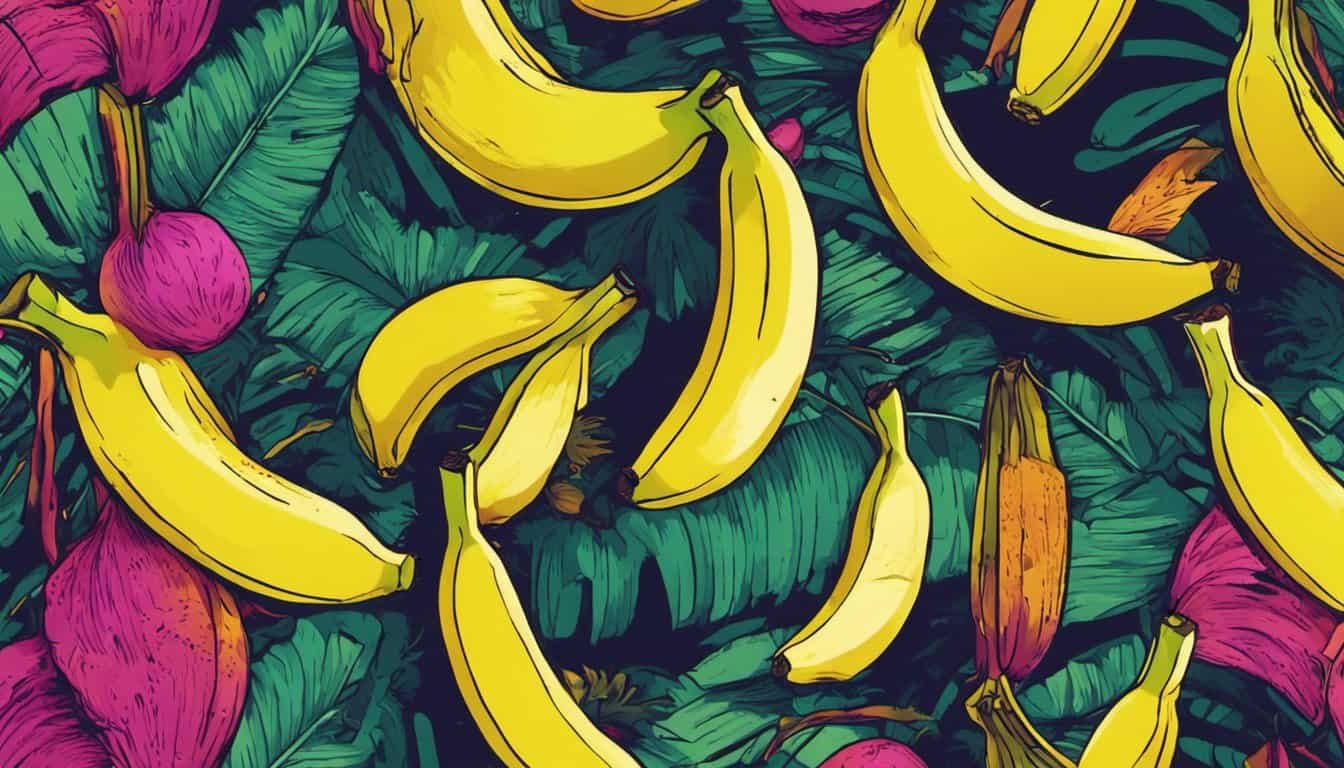
They are an ideal type of banana to feed babies, provided they are fully ripened first.
Apple Bananas
Originally found in Hawaii, these bananas look much smaller and plumper from the outside than the more traditional Cavendish.
There is a slight pink hue to their flesh and they can be quite firm, so do not make the ideal bananas to feed to young babies.
Older babies and toddlers will really enjoy their sweetness, though, as they have earned the nickname “candy apples” due to their sugary taste.
Ladies’ Finger Bananas
These little bananas look like mini versions of the Cavendish and behave in much the same way, so can be another great choice for your baby.
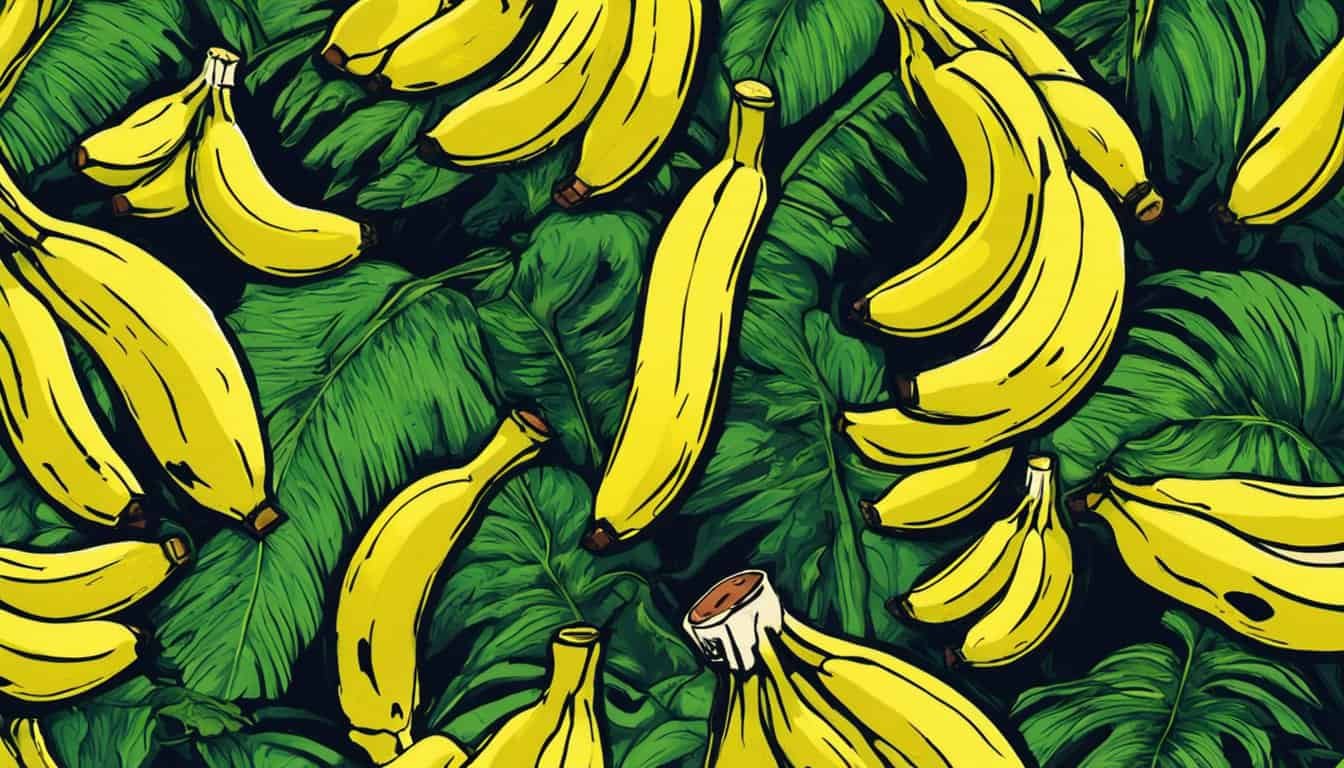
With a sweet taste, they are easily palatable and their small size means they make just enough for a baby without leaving too much waste.
Red Bananas
Red bananas look quite different from the traditional yellow bananas we are more used to.
When ripe, their skin takes on a very red color, hence their name. They are also very sweet so can make a tasty treat for children.
They have great nutritional value, like their yellow counterparts, but the carotenoids that give them their red color are also particularly good for maintaining the health of your baby’s eyes.
They also contain more antioxidants than yellow bananas, and, despite tasting very sweet, they have a lower GI score which means they don’t increase blood sugar as rapidly. This makes them potentially even better for your baby’s health than a yellow banana.
Cooking Bananas, or Plantains
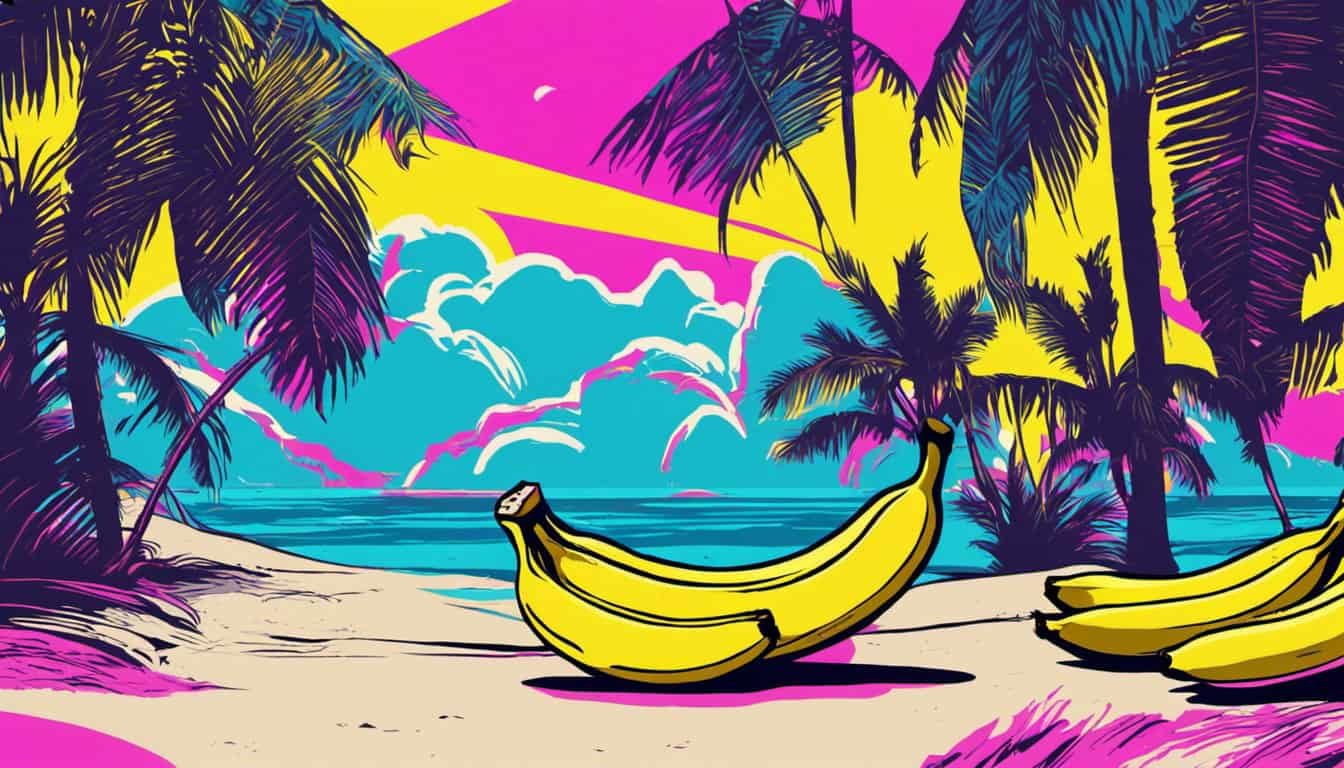
These bananas are a staple food in the Caribean and Africa. They behave more like a root vegetable and can be delicious when cooked.
Plantains come in the same colors as traditional bananas, beginning green and turning yellow then black.
In their green stage, they are very starchy and can be treated like potatoes. Once yellow, they become sweeter and are traditionally fed at weaning to babies in their native countries.
One of the benefits of plantains is that they include protein as well as most of the nutrients of traditional bananas, making them very good at helping babies put on weight.
In total, there are over 1,000 different types of banana throughout the world and all have benefits to babies.
5. How Ripe Should Bananas be for Baby?
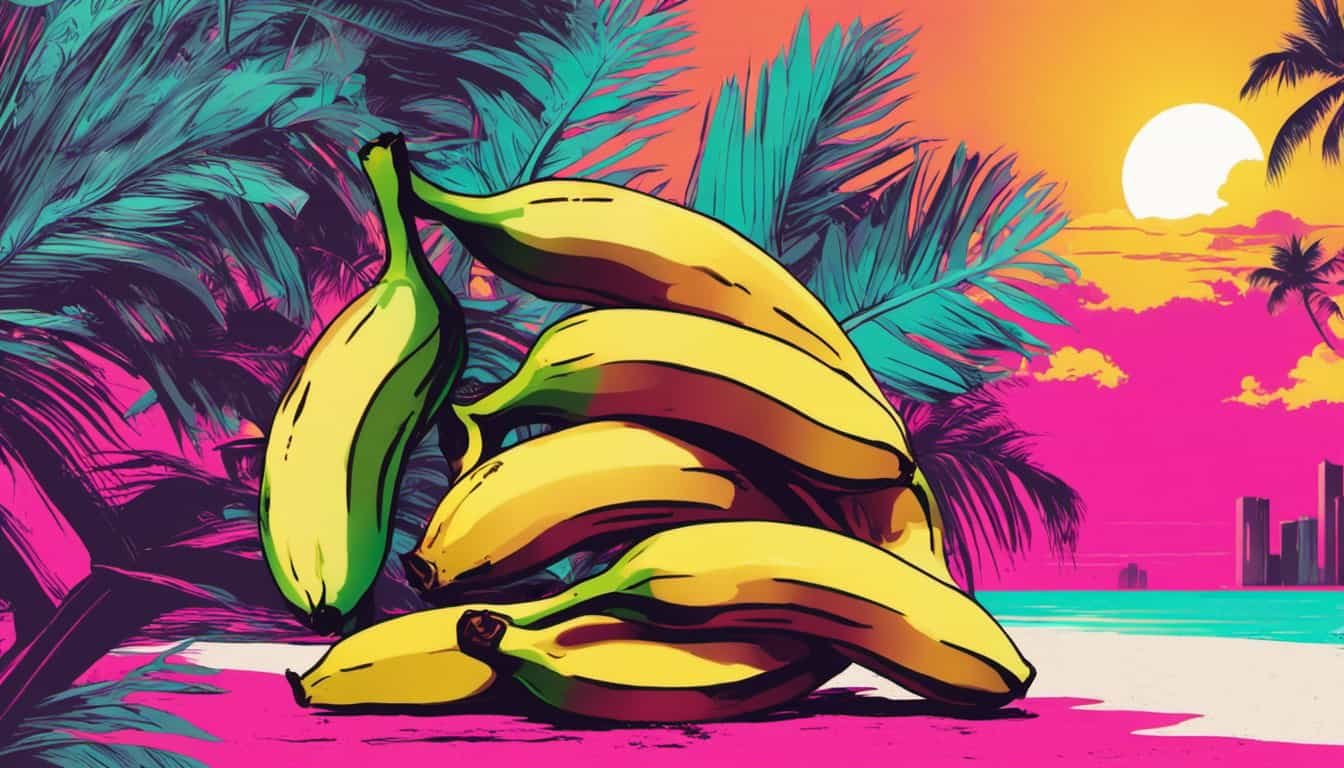
Bananas are a great first food for babies because they are so easily digested and gentle on babies’ stomachs; however, it is important the banana is fully ripened. Unripe or raw banana can be difficult to swallow, cause painful throats and even lead to constipation.
One of the best things about bananas is that they continue ripening after being picked. For this reason, you should avoid placing ripening bananas in the refrigerator. They ripen beautifully when placed in a bowl near a window. If you are running out of time, you can help bananas ripen faster by placing them in a paper bag.
Once a banana has fully ripened or turned black, you can turn to the refrigerator to help it last a little longer. Storing ripe bananas in the refrigerator keeps them from ripening any further and becoming rotten.
6. When is the Best Time to Feed a Banana?
The simple answer to this question is when your baby is hungry, but it is important to begin a mealtime routine that the family can stick to as baby grows.
A banana for breakfast is a great way to start the day for little ones, giving them a tasty morning treat that is loaded with powerful nutrients.

The sugar in bananas can give a great energy boost to give your baby the power they need for important play and growth.
Because of this, some experts have suggested feeding a banana at night time should be avoided. However, there is no reason to avoid feeding a banana as a tea-time or supper treat.
Contrary to popular belief, bananas can make babies feel full and satisfied, while the potassium content is also very helpful in inducing sleep.
Due to their fiber content, though, bananas can take some time to digest and the digestive system slows or even stops while sleeping. For this reason, it is advisable to make sure to leave a few hours between your baby’s last banana of the day and their bedtime.
To conclude, bananas can be fed at any time of the day but should be avoided just before bedtime.
7. How Often Can Babies Eat Bananas
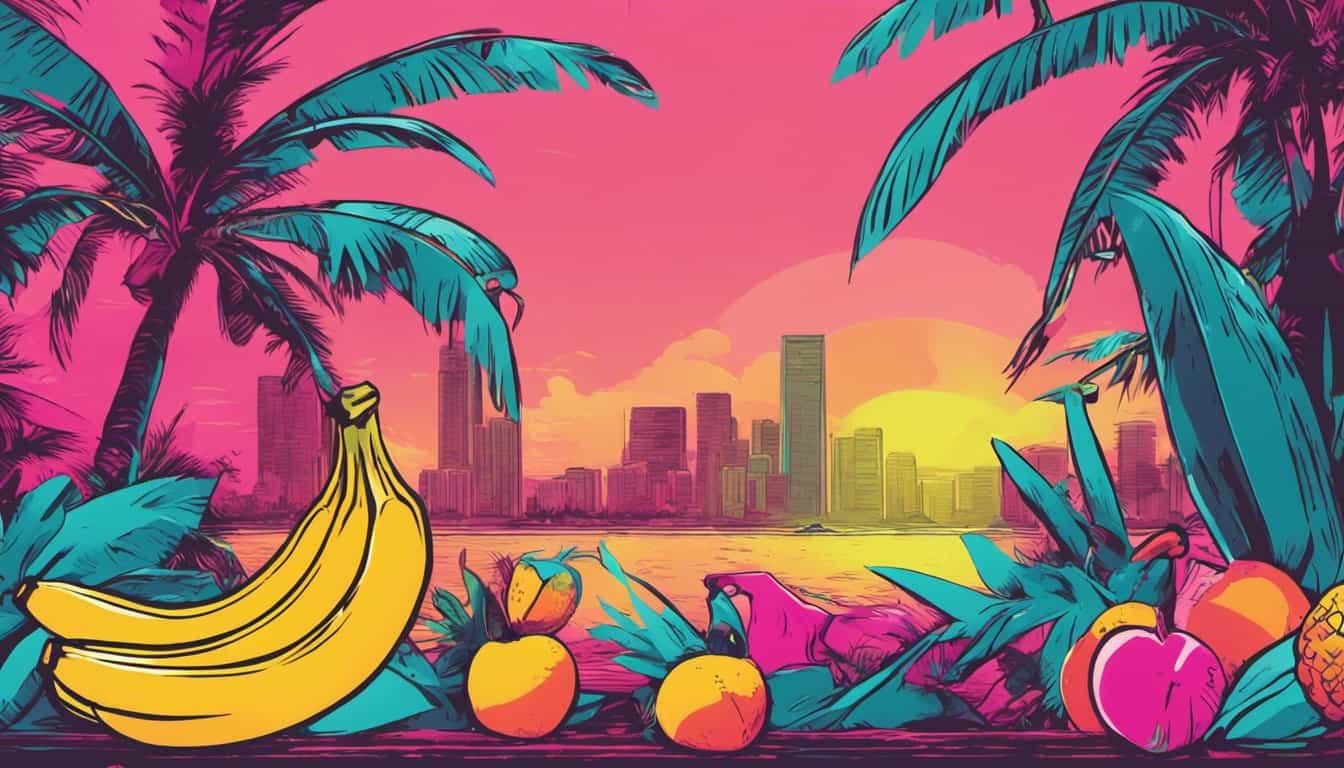
There is no reason to suggest that babies shouldn’t have bananas every day, and some babies handle a number of bananas per day with no ill effects.
Some people have said that the potassium level in bananas can be harmful if you eat too much, but this is mostly unfounded as you would need over 50 bananas to take the potassium level above safe limits.
That said, bananas take a long time to digest due to the fiber content; therefore, babies might develop tummy aches if they eat too many in one day. Every baby is different, and some can eat a couple of bananas every day with no side effects.
As a general rule of thumb, one or two bananas a day is probably sufficient for your baby.
8. Commercial Banana Baby Foods
Because bananas are so tasty and so healthy for babies, many commercial producers include them as part of their pre-prepared meals.
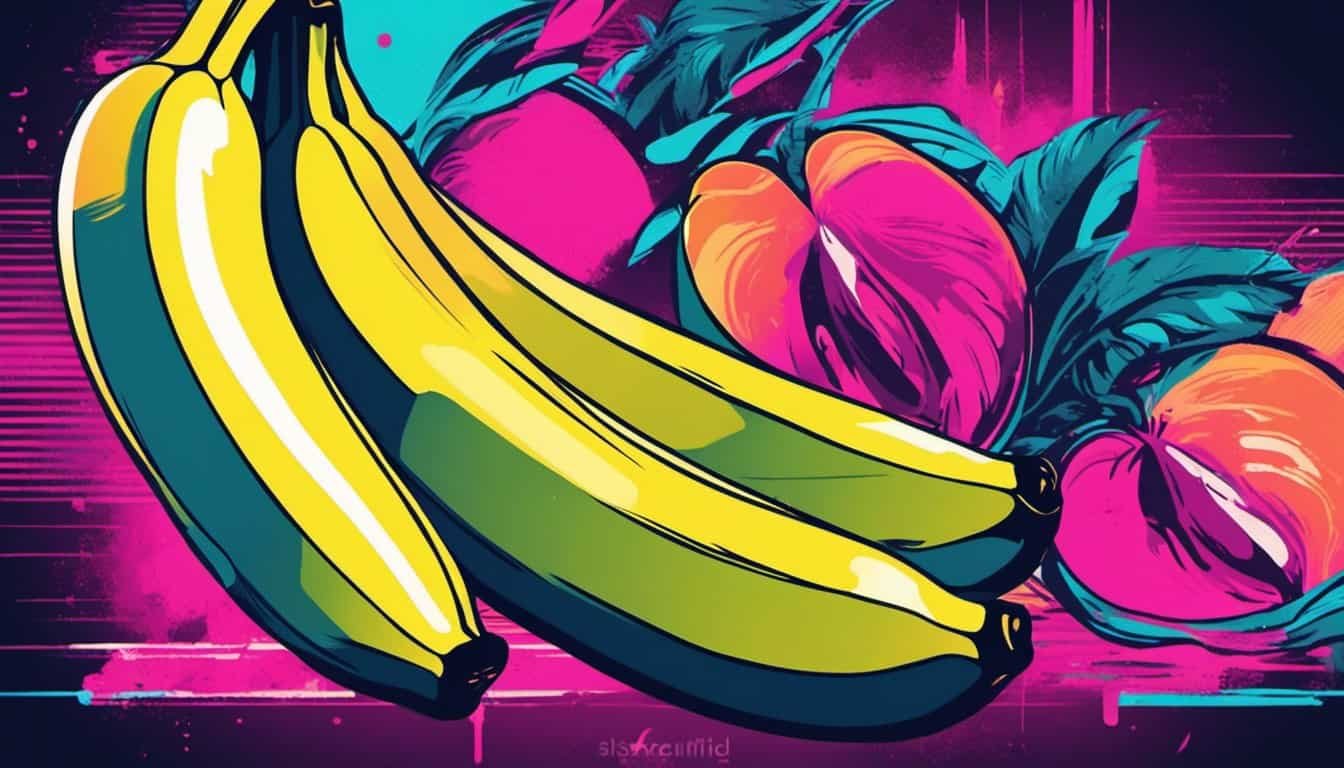
Organic baby food is hugely popular as many parents feel that choosing organic products gives you the best chance of achieving the highest quality in nutrient provision. Some of the best organic baby foods available on the market at the moment include:
Plum Organics – pureed fruit and vegetables are available in stage one, including banana
Earth’s Best – purees come in pouches as well as jars for extra versatility
Gerber Organics – again, pureed fruit is available in pouches or jars.
Happy Baby Organics – a variety of flavors and blends are included as your baby moves up the stages
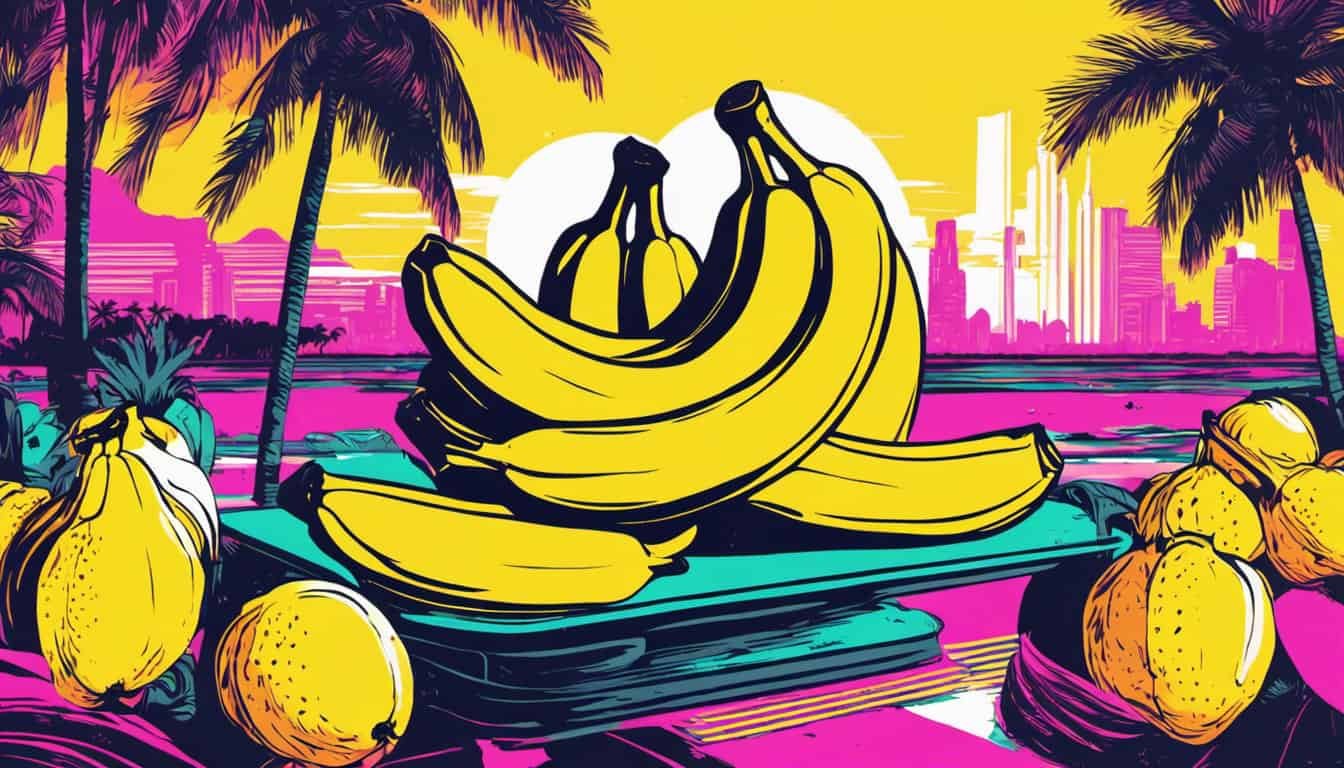
Unless you rely on the convenience of a pouch to feed baby on the go, there is really no need to replace your home cooking with store-bought baby food.
Bananas are some of the most convenient baby foods to feed, as they come in their own natural packaging which is safe for the environment and perfectly hygienic. All you need is a spoon, bowl, and something to mash the banana.
Understandably, keeping utensils sterile while you’re out and about can be something of a headache, which might be why many parents opt to feed their babies directly from a pre-prepared pouch.
9. Home Recipes
While bananas should be fed on their own at first, there are plenty of recipes you can make that include banana as your baby moves on to a more varied diet. You can even use your baby’s taste for bananas to your advantage if you want them to eat other foods as well.
Mashed Banana
Ingredients
- 1 banana
- breastmilk, water or formula
Instructions
- Peel the banana and slice into a bowl
- Take a fork and mash the banana until the required consistency
- If desired, add a water, breastmilk, or formula for a little more liquid
- Serve on a clean spoon
Notes
Avocado Banana
Ingredients
- 1 banana
- 1 avocado
- breastmilk, water or formula
Instructions
- Peel the banana and slice into a bowl
- Slice the avocado and add to the banana
- Take a fork and mash the banana and avocado until the required consistency
- If desired, add a little water, breastmilk, or formula to add a little more liquid
- Serve on a clean spoon
Notes
Banana Custard
Ingredients
- 1 banana
- 1.5 egg yolks
- 0.5 cup breastmilk or formula
Instructions
- Chop the banana and add to the egg yolks and milk
- Use a whisk or blender to mix the mixture thoroughly
- Pour into oven-proof dishes and cook in the oven for about 20 mins at 350F
- Check custard is firm by inserting a knife into the middle. If it comes out clean, the custard is ready.
- Allow to cool or refrigerate before serving to baby.
Banana Porridge
Ingredients
- 1 banana
- 1/2 cup cooking oats
- 1 cup watercinnamon (if desired)
Instructions
- Boil the water and cook the oats
- Add the chopped banana
- Simmer until the right consistency is achieved
Notes
10. Mix and Match!
Bananas are a great way to introduce new foods to your baby. Once they are used to eating bananas in a pureed form, you can add them to any number of other foods to introduce new tastes and textures.
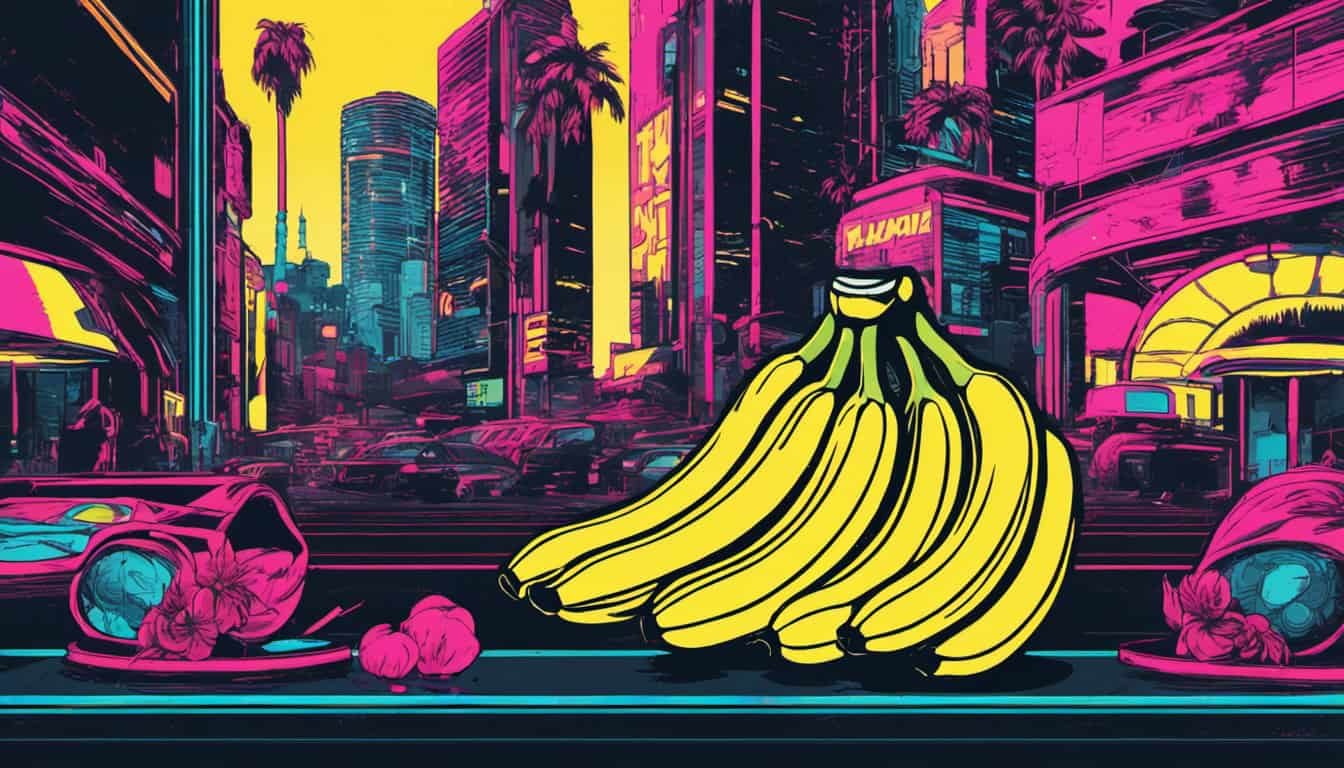
Adding banana to baby rice is an excellent way to increase the nutritional value and make the rice more tasty for fussy babies.
The same is true when introducing other bland foods, such as potatoes. Mashed potatoes are an excellent staple for babies to move onto, but they sometimes find the taste a little too bland at first. Try adding a little mashed banana with breastmilk or formula to mashed potatoes for a taste your baby will love.
11. Curious George

Because yellow is such a vibrant prime color, babies are often attracted to yellow things. Fussy eaters might be persuaded to eat a little more by coloring in bananas, especially if they are part of a picture of popular cartoon characters, like Curious George.
On the whole, bananas are nature’s gift to parents: an ideal convenience food that can be very healthy for our babies.














